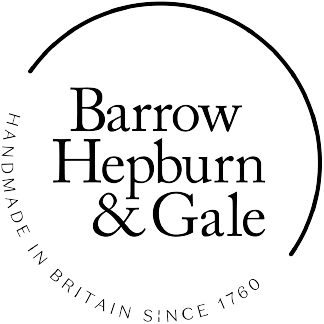National Archives document Barrow, Hepburn & Gales move into Ladies Handbags (1930s)
Over the last few months, I have made many discoveries of fascinating documents which I will share with you over the next few blog posts. I hope these documents will give you an insight into the world and work of Barrow Hepburn and Gale.
These documents shall appear as a series of blog posts. My first blog post shall take us back to 1930 where we learn that Barrow, Hepburn & Gale ventured into the fashion world and started to make ladies’ handbags.
Hugh Ahern - Researcher in residence
"Women have plenty of roles in which they can serve with distinction: some of us even run countries. But generally, we are better at wielding the handbag than the bayonet." ~ Margaret Thatcher
As we know Barrow, Hepburn & Gale has been a prominent player in the leather goods industry since the early 20th century. In 1930 the company employed hundreds of skilled women and men.The company was known primarily for their production of heavier leather goods, I found out that the company made high quality suitcases, travelling cases, and footballs.
Following the Wall Street Crash in 1929 and a recession in Britain, the company faced financial uncertainty. Aware that its name had become ‘a byword for sound craftsmanship and good quality’ the company looked to diversify. The increasing market demand for handbags presented a welcome opportunity.
A forward-thinking approach for the times demonstrated by a commitment to innovation and fashion, resulted in the clever strategy of locating the company’s designers in European cities enabling them to identify emerging trends.
In cities such as Offenbach, Paris, and Vienna the company’s observant staff reported back to London on what the fashionable elite were wearing and carrying. Using the information the company mass produced handbags in a variety of styles, shapes and in different materials. The handbag quickly became must-have fashion item.
The company recognised that it needed to bolster and add to the skills of its British workforce. This it did in 1932 utilising the provisions of the Aliens Order 1920.Barrow Hepburn & Gale was permitted to employ three skilled German machinists from Offenbach for a limited period. The machinists were tasked not only with contributing their fashion expertise but also to train the company’s craftswomen and craftsmen… The lessons learned contributed to increased production and product innovation.
The recurring theme of this particular aspect of my research showed a company that has an ingrained instinct to develop through collaborations and intelligent diversification.












